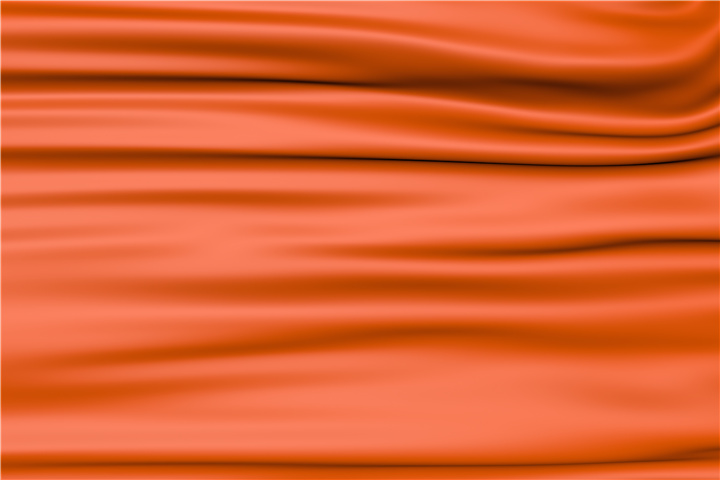China satin fabric factory said that woven coarse satin fabric is actually an upgrade from satin to unrestrained style.
The general Woven Satin fabric is delicate and compact, and the texture is often invisible, so the mirror of the cloth is very bright.
China satin fabric factory said that the woven coarse satin fabric is designed with thicker yarn or silk, with clear texture and unrestrained style, more emphasis on leisure, and its application is greatly expanded.
The weave principle of woven coarse satin fabric has no essential change, but extends the style application.
China satin fabric factory said that the reason why woven coarse satin fabric highlights “coarseness” is that the texture and texture have become rough. This “ruggedness” has two meanings: one is that the internal yarn count raw materials have become thicker, and the other is that the appearance texture and texture have become rough.
How to understand? If the yarn is thick, even if the density is high, the texture will become clear and obvious. Unlike high count yarn, the texture is almost invisible.
China satin fabric factory said that the texture of the appearance is the characteristics of the cloth at a glance. Woven coarse satin fabric is often mistaken for twill.
If the left-right twist configuration is adopted, the twill texture is more obvious, but the essence is satin.
Therefore, there is a non-standard term in the industry – Satin skew, which is the illusion caused by woven coarse satin fabric.
China satin fabric factory said that are there any requirements for raw material and structure of woven coarse satin fabric? Strictly speaking, No.
In the past, in order to highlight the magnificence of the satin, brilliant filaments or triangular shaped filaments were generally used, such as silk plain crepe satin, Bamei satin, woven brocade, acetate satin, rayon satin, etc.
But now both filament and staple fiber are widely used, such as all cotton satin, Tencel satin, Tencel cotton satin, modal cotton satin, etc. they do not pursue the dazzling luxury of appearance, but maintain a simple and elegant style.
Moreover, Tiansi satin, Tiansi cotton satin and modal satin are also sand washed and finished.
China satin fabric factory said that a layer of grey frost is produced on the cloth, which makes the color softer, more subtle and elegant, and enriches the appropriate fashion style.
The essence of woven coarse satin fabric is still Satin woven fabric, but it has moved towards the coarse crazy route, especially with coarse count raw materials, which can be made very thick to meet the needs of autumn and winter.
China satin fabric factory said that if warp and weft yarns are made of materials with different structural properties, the appearance of woven coarse satin fabric will change more, but if ultra-fine yarn or silk, the change of cloth style will not be obvious.

Why do some satin fabrics look like twills said by China satin fabric factory
China satin fabric factory said that you must have encountered such a problem. There are obviously the same 4-up and 1-down organization, but why do some 4 / 1 satins look like satin and some 4 / 1 satins look like twill effect, which also makes you feel very different when looking for samples or making goods.
Satin weave refers to that the warp (or weft) and floating lines (jumpers) are longer and the interleaving points are less.
China satin fabric factory said that although they form diagonal lines (the included angle of diagonal lines is smaller), they are not continuous, and the spacing distance between them is regular and uniform. This fabric structure form is called satin weave.
The flying number refers to the number of adjacent two lines or lines separated between two adjacent organizational points, and the flying number of satin shall not be less than two.
China satin fabric factory said that the flying number is divided into warp flying number and weft flying number.
Meridional flying number refers to the number of weft threads separated between two adjacent meridians with the same organization point;
Weft flying number refers to the number of longitudes separated between two adjacent weft points with the same organization.
Satin texture can be expressed by fraction, and molecule represents the number of yarns in a tissue cycle, which is referred to as the number of yarns.
The denominator represents the flying number, the meridional flying number is used for the warp surface satin, and the weft flying number is used for the weft surface satin.
China satin fabric factory said that the number of yarn circulating in a satin weave shall not be less than 5, and the flying number shall be greater than 1 and less than the number of yarn circulating in the weave minus 1.
The flying number and the number of yarn circulating in the weave shall be prime numbers to each other.
China satin fabric factory said that the number of commonly used satin weave circulating yarns is 5, 8, 12, 16, etc., such as 5 / 3 weft satin, which can be read as five three flying weft satin.
Based on satin weave, many satin weave changes can be evolved. The change methods are as follows: increasing warp (weft) weave points.
Flying number of change organization points; Extend tissue points, etc. (see the grid above for the change effect).
For example, a single or multiple organization points are added around the warp or weft organization points to form a reinforced Satin organization.
China satin fabric factory said that in a tissue cycle, different flying numbers are used to form variable satin weave, such as six variable satin weave, whose meridional flying numbers are 2, 3, 4, 4, 3 and 2.
Heavy satin weave is formed by extending warp or weft weave points, which is often used in handkerchief weaving.
Satin weave can be combined with other fabrics to form Satin poplin, satin handkerchief and other fabrics.



